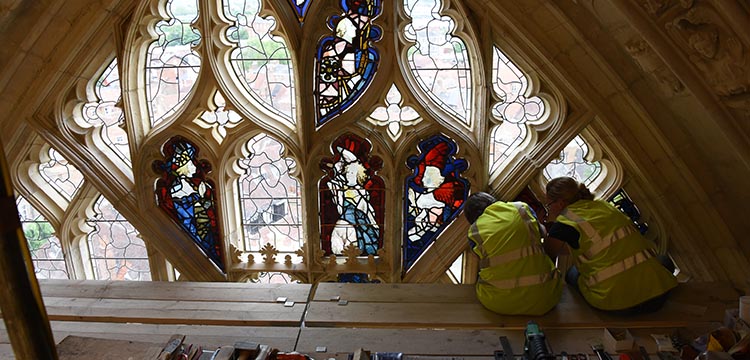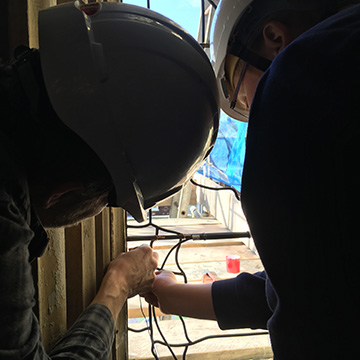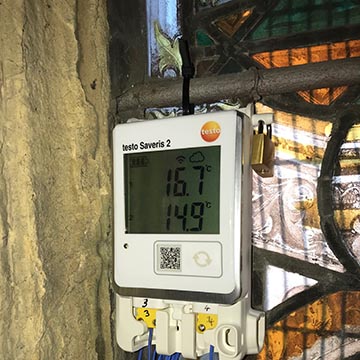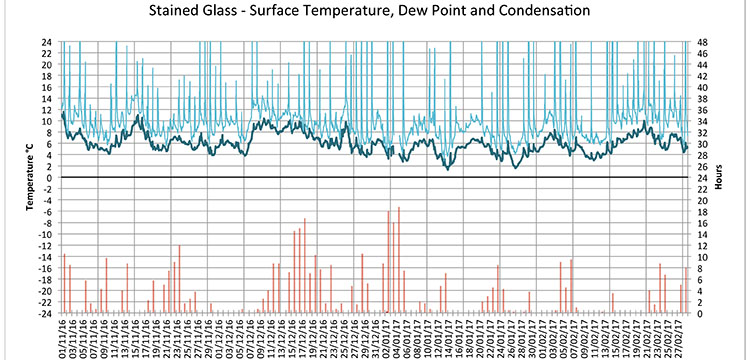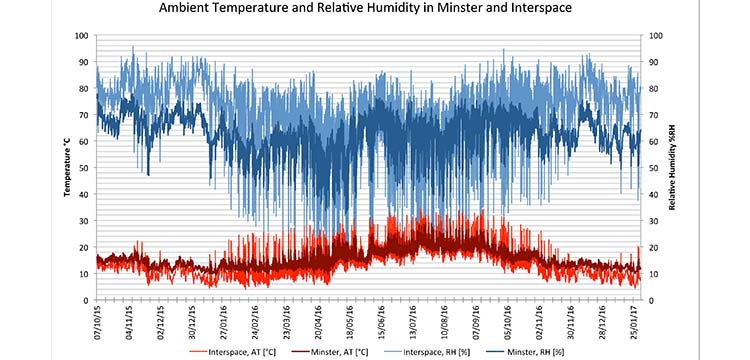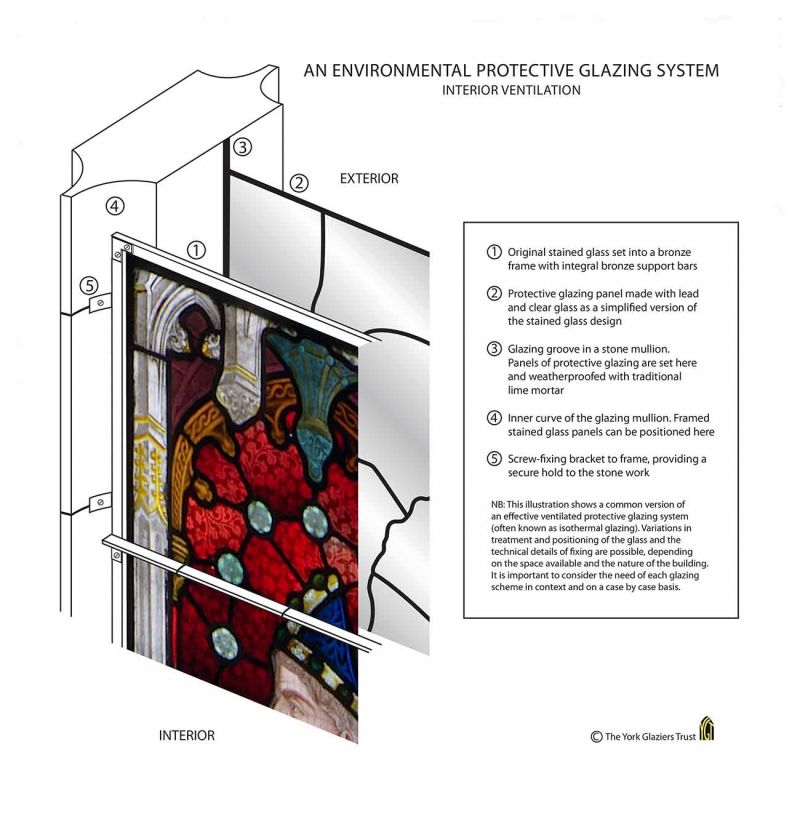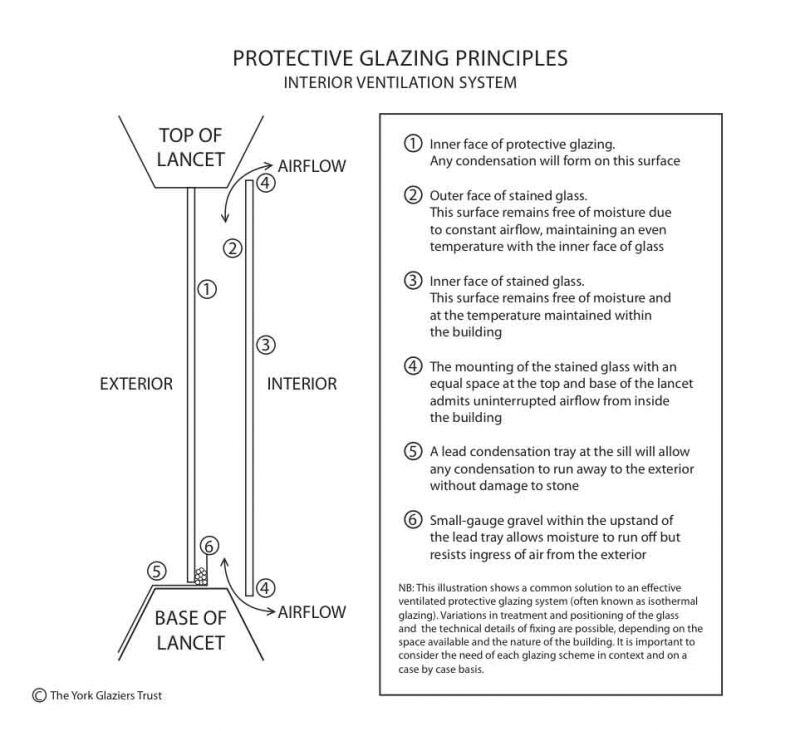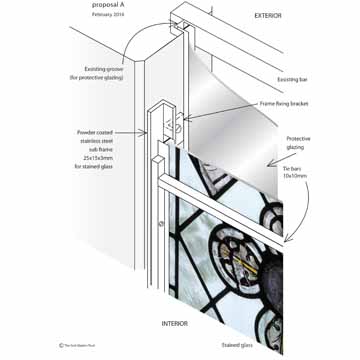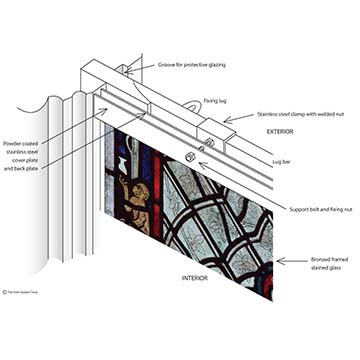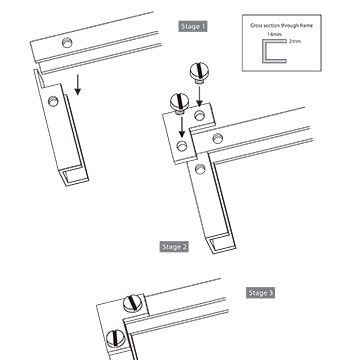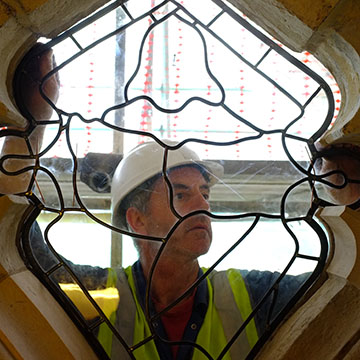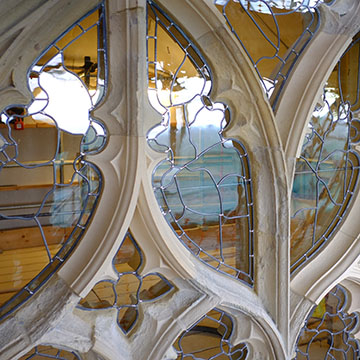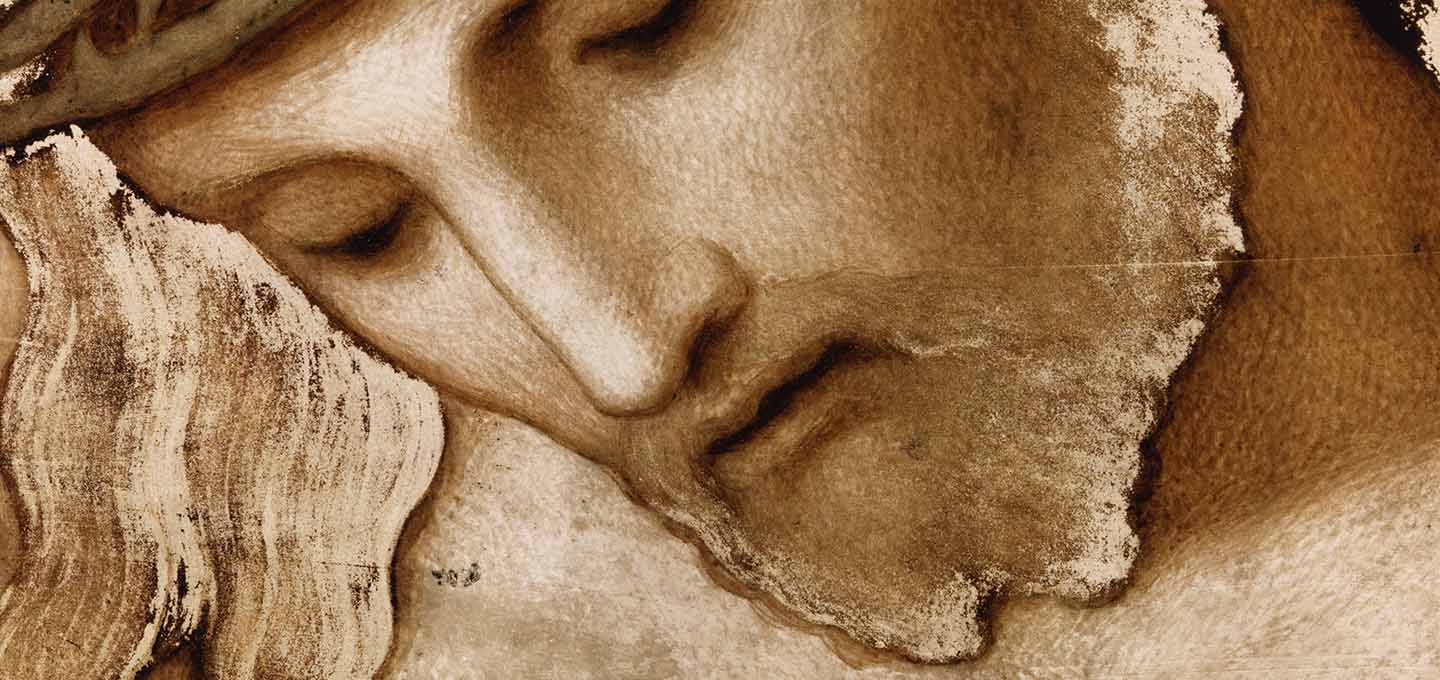
Environment & Protection
Over 50 Years of Excellence in Stained Glass Craft and Conservation
Monuments, historic buildings, and works of art provide the most solid and tangible links to our ancestors and their way of life. These rare survivals cannot simply be copied or replaced; they are irretrievably lost once they are destroyed or allowed to decay. It is therefore vital to deploy new and sustainable ways of preserving our cultural heritage so that its value and significance as original artefacts can be safeguarded for future generations. Preventative conservation is central to this endeavour. This long-term management of artistic heritage is part of a wide-range of preservation strategies that aims to mitigate deterioration through the implementation of appropriate environmental controls and handling procedures. The aim of preventative conservation is not only to slow or arrest decay, but also to maximise the impact and lifespan of the conservation treatments employed and to reduce or eliminate the need for further interventions in the future.
Protective Glazing
Many of the symptoms of glass deterioration and paint loss are triggered by exposure to moisture, both externally and internally. Exposure of stained glass to the elements is one of the leading factors in initiating the irreversible processes of paint loss, corrosion, and microbial growth on windows. Further deterioration of a window can be halted by recourse to internally ventilated protective glazing (sometimes called isothermal glazing or secondary glazing), which removes fragile historic glass from the damaging effects of external moisture and recurrent cycles of internal condensation, as well as the impact of wind pressure. Over five decades of international research has demonstrated the efficacy of protective glazing. YGT has extensive experience of the design and installation of protective glazing systems in sensitive historic locations, ensuring that the optimal environmental parameters are met, while being wholly discrete. The external appearance of the protective glazing can be very effectively mitigated by modifying the glass's type and texture, and through the employment of a leaded design that is appropriate to the high artistic character of its setting. In many instances, the installation of a properly functioning protective glazing removes the necessity to retain badly rusted and unsightly wire grilles, providing an improvement to the external appearance of the building.
Environmental monitoring
During the course of a preliminary site survey or required quinquennial inspection, the necessity for regular and precise monitoring tailored to specific objects may be apparent. Environmental monitoring of stained glass enables an objective and highly specialised assessment to be made, in order to establish and determine the correct requirements for an object. The aim of these environmental studies is to observe and evaluate the existing climatic conditions on and around a panel or window, assessing the level of condensation and any temperature fluctuations. Climate-related factors are responsible for a significant amount of damage to stained glass, contributing to thermal stress, glass corrosion, and paint loss.
We are able to offer in-house, non-destructive, stained glass specific solutions for environmental monitoring, using specially calibrated and maintained high-specification data loggers to record ambient and surface temperature, and relative (RH) and actual (AH) humidity. We are also able to accurately measure air flow, and, for storage areas and showcases, can additionally provide volatile organic compound (VOC) detection and measuring. Our equipment can be discretely mounted, as it does not require any cables for long-term operation. We compile, analyse, and interpret all of the raw data, and as part of the documentation, we provide diagrams, graphs, and readily understandable written conclusions and recommendations. Monitoring allows us to establish or confirm the safest parameters for your stained glass. As well as informing the design of new protective glazing, the efficacy of existing systems can be tested, and meaningful alterations and improvements suggested. Our clients have included cathedrals, museums, and major educational institutions.
Bespoke Framing solutions
YGT can design and install protective glazing systems specific to the individual needs of the window, setting, and client. The preferred system is an internally ventilated protective glazing system, which sees the original glass moved out of its existing glazing groove, with new protective glazing inserted in the former position of the stained glass, a system with over 50 years of European research data behind it. The stained glass is framed and moved inwards in the building, set in front of the protective glazing. Air is allowed to circulate around the original glass, drawn into the interspace between the two layers of glazing via air gaps generally at the top and bottom of the window. The Trust are also experienced in adapting existing secondary glazing systems.
Various solutions are available for the materials and style of the frames to support the historic glass, including manganese bronze U-section, or engineered powder-coated steel. YGT has developed a system of mechanical screw fixings for manganese bronze frames, an extremely strong and discrete approach that enables the panels to be easily and safely removed from their frames if necessary. To find out more about this technique, read the article by Nick Teed, published on vidimus.org.
We work closely with clients to ensure the most appropriate choice of glass for the external protective glazing from a wide range of options, and aim to achieve an effective protective system that protects the stained glass without compromising the architectural aesthetics of the building or setting.
UV Protective Glazing
The YGT was the first conservation studio in the UK to pioneer a recently developed UV resistant glass, selecting it to protect the newly restored Great East Window of York Minster. This ground-breaking glass, Restauro UV©, is manufactured by Glasshuette Lamberts of Germany, the world-leading producer of mouth blown antique glass. Restauro UV © protects all photosensitive materials, including epoxy resins and other conservation materials, against deterioration by UV. This glass also has enormous potential in settings such as libraries, archives and polychromed historic interiors, or in locations displaying light-sensitive historic textiles or furnishings.
Selected Reading:
A. Bernardi et al., 'Thermal Stress as a Possible Cause of Paintwork Loss in Medieval Stained Glass Windows', Studies in Conservation, 53, 2008
A. Bernardi et al., 'Conservation of Stained Glass Windows with Protective Glazing', Journal of Cultural Heritage, 14, 2013
VIDRIO, Determination of Conditions to Prevent Weathering due to Condensation, Particle Deposition, and Micro-Organism Growth on Ancient Stained Glass, 2002-2005 (available to view online here)
Get In Touch
If you would like more information on our conservation services please get in touch.
Contact UsContact Us
The York Glaziers Trust, 6 Deangate, York, YO1 7JB

